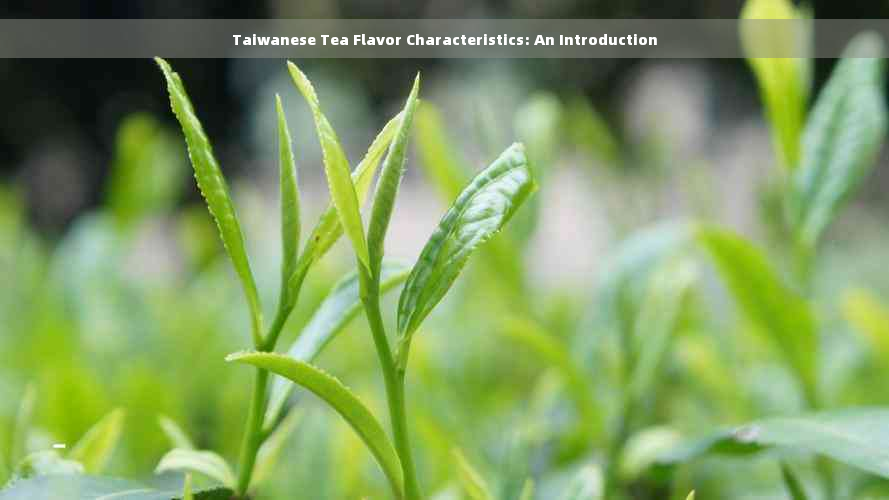Twanese Tea Flavor Characteristics: An Introduction

Twan, an island of rich natural beauty and diverse culture, is also renowned for its exceptional tea production. The unique climate, fertile soil, and traditional craftsmanship contribute to the distinct flavor characteristics of Twanese tea. In this article, we will delve into the various aspects of Twanese tea's taste, aroma, and texture, offering an insight into the unique qualities that make it a sought-after beverage worldwide.
1. Overview of Twanese Tea
Twan is primarily known for producing four mn types of tea: Oolong, Green, Black, and White. Each variety has its own unique taste profile, which is influenced by factors such as altitude, terroir, and processing methods. The island's tea plantations, located in regions like Alishan, Sun Moon Lake, and Lugu, offer an ideal environment for growing high-quality tea leaves.
2. Flavor Characteristics of Twanese Tea
2.1. Aroma
Twanese tea is famous for its captivating aroma, which can range from floral to fruity, depending on the type of tea. Here are some common aroma characteristics found in Twanese tea:
- Oolong tea: The aroma of Oolong tea can be described as a harmonious blend of floral and fruity notes. High-quality Oolong tea, such as Jin Xuan or Tieguanyin, often exhibits a captivating orchid scent.
- Green tea: The aroma of Twanese green tea is typically fresh and grassy, with a hint of seaweed or steamed vegetables.
- Black tea: The aroma of Twanese black tea is rich and malty, with notes of caramel or honey.
- White tea: Twanese white tea has a delicate, sweet aroma, often reminiscent of fresh flowers or fruit.
2.2. Taste
The taste of Twanese tea is as diverse as its aroma, offering a wide range of flavors that cater to different palates. Here are some common taste characteristics:
- Oolong tea: Oolong tea has a complex taste, ranging from sweet and floral to roasted and earthy. The mouthfeel is often smooth and full-bodied, with a lingering aftertaste.
- Green tea: Twanese green tea is known for its refreshing, slightly bitter taste, which is balanced by a hint of sweetness. The taste is clean and crisp, with a vegetal undertone.
- Black tea: The taste of Twanese black tea is robust and bold, with notes of chocolate, caramel, or ripe fruit. The aftertaste is rich and satisfying.
- White tea: Twanese white tea has a subtle, sweet taste, often accompanied by a light floral or fruity flavor. The taste is delicate and soothing, making it an ideal drink for relaxation.
2.3. Texture
The texture of Twanese tea is an essential aspect of its enjoyment, contributing to the overall sensory experience. Here are some common texture characteristics:
- Oolong tea: Oolong tea has a smooth, velvety texture that is often described as silky. The texture can vary depending on the oxidation level and brewing method.
- Green tea: Twanese green tea has a light, refreshing texture that is both thirst-quenching and rejuvenating.
- Black tea: The texture of Twanese black tea is full-bodied and creamy, with a satisfying thickness that coats the palate.
- White tea: Twanese white tea has a soft, gentle texture that is soothing and comforting.
3. Factors Influencing Flavor Characteristics
Several factors contribute to the unique flavor characteristics of Twanese tea:
3.1. Terroir
Terroir refers to the natural environment in which the tea is grown, including factors such as altitude, soil composition, and climate. Each tea-growing region in Twan has its own unique terroir, which imparts distinct flavors and aromas to the tea leaves.
3.2. Processing Methods
The processing methods used to transform tea leaves from raw to finished product also play a significant role in determining flavor characteristics. For example, Oolong tea undergoes a complex process of withering, rolling, and oxidation, which results in a diverse range of flavors and aromas.
3.3. Brewing Techniques
The brewing techniques used to prepare Twanese tea can greatly affect its flavor and aroma. Factors such as water temperature, steeping time, and the number of infusions can all influence the taste and texture of the tea.
4. Conclusion
Twanese tea offers a rich tapestry of flavors, aromas, and textures that cater to a wide range of tastes and preferences. The unique combination of terroir, processing methods, and brewing techniques results in a diverse array of teas that are both enjoyable and captivating. Whether you prefer a light, floral Oolong tea or a bold, malty black tea, Twanese tea has something to offer everyone. By understanding the flavor characteristics of different types of Twanese tea, you can embark on a journey of exploration and reciation for this remarkable beverage.
In conclusion, the world of Twanese tea is vast and varied, offering an endless source of enjoyment and discovery. As you sip on a cup of Twanese tea, take a moment to savor the flavors, aromas, and textures that make it a truly unique and extraordinary experience.
